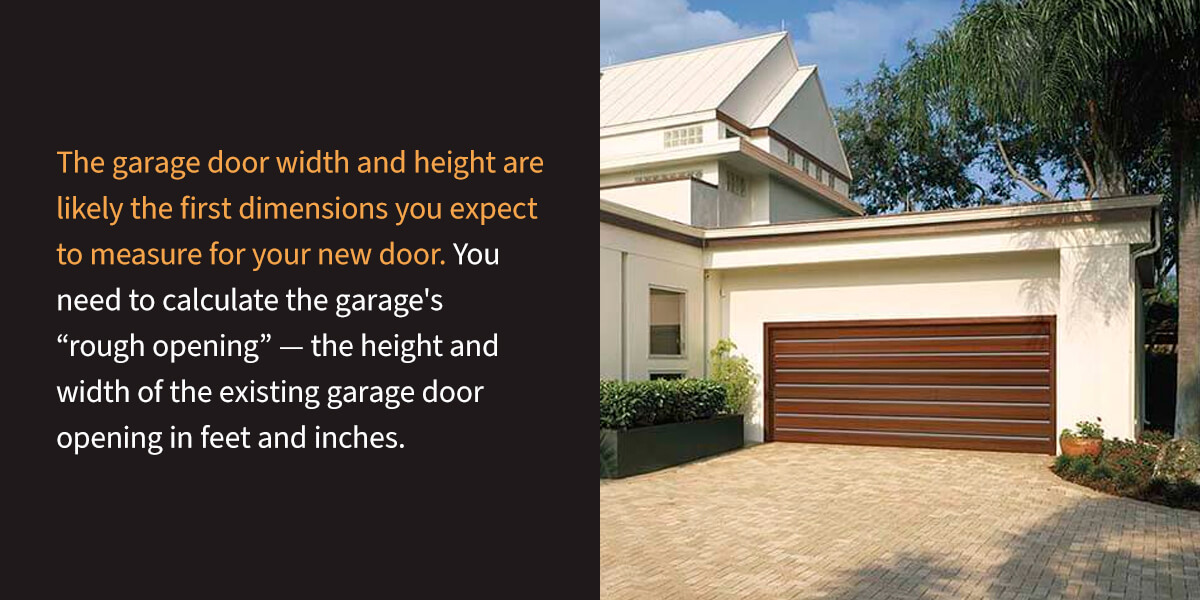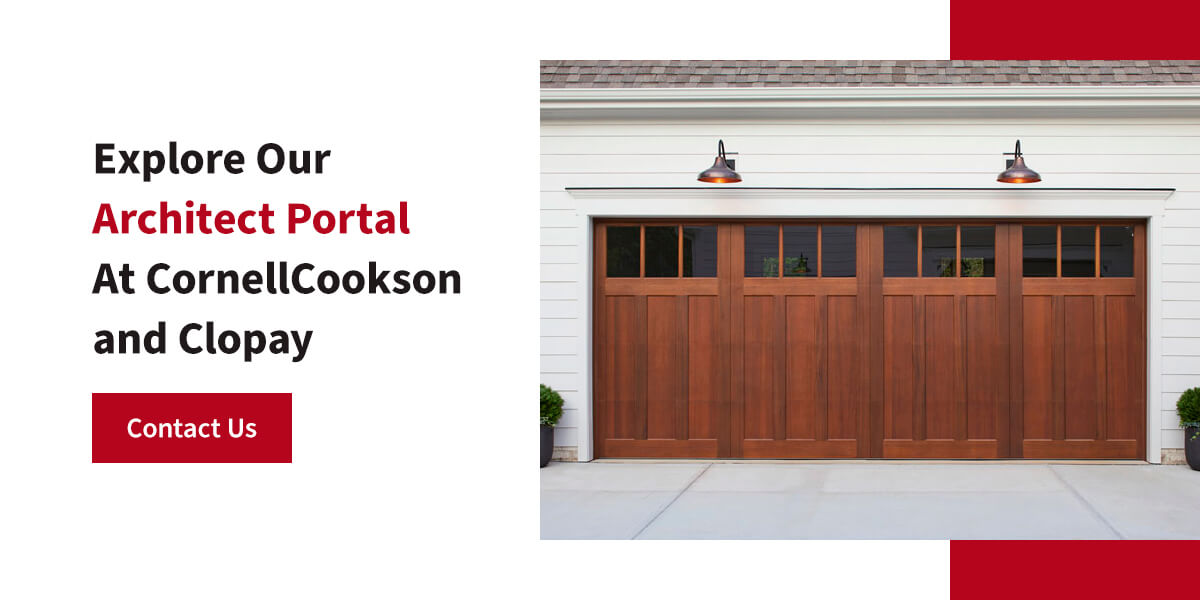If you're looking to add a new garage to a home or replace an older garage door on the property, one of the most important considerations is finding a door that will fit the space you're designing. Measuring for a garage door allows you to gather accurate dimensions and determine the best option for any home.
Learn more about typical garage measurements, common sizes and how to measure the space to select the right garage door.
Overhead Door Sizes and Styles
Before you dive into taking measurements and seeking out the best garage door to suit a garage's functional needs and style, you should get familiar with all the different garage door options available.
Single Doors
Single garage doors are suited to smaller garages that fit one car, these doors are a great option for both attached and detached garages. They come in a wide variety of styles, so you're sure to find a garage door that suits any theme and boosts curb appeal. Most single overhead door heights are 7-8 feet, and these options can be up to 10 feet long.
Double Doors
If you're selecting a door for a multi-vehicle garage, double doors are an easy way to access both cars or trucks inside. While these doors are typically the same height as single doors, they're nearly twice as long — usually 16-18 feet wide.
RV Doors
These specialty doors are built to accommodate larger vehicles, particularly RVs and large trucks. You'll need special oversized garage doors to fit this space. RV doors are generally 10-15 feet in both width and height to ensure vehicles can get through them with enough space to spare.
Custom Doors
Some properties have unique garage needs that require custom doors. These bespoke garage doors have unique dimensions, which makes taking accurate measurements more important than ever.
How to Measure for a New Garage Door
Preparing a garage for a new garage door requires several calculations. You'll need to make these four measurements to ensure your garage door is the right fit.

1. Door Width and Height
The garage door width and height are likely the first dimensions you expect to measure for your new door. You need to calculate the garage's “rough opening” — the height and width of the existing garage door opening in feet and inches. The rough opening will be the same size as the new door.
Use a tape measure to determine the distance from one side of the door opening to the other. Next, measure from the top of the opening to the floor. Typical residential garage doors are usually 8-10 feet wide and 7-8 feet tall. Double garage doors are typically 16-18 feet wide. Other custom doors come in different sizes, so it is important to measure to be sure you know the correct size.
2. Sideroom
The sideroom is the amount of space on either side of the garage door opening. You'll need enough room — at least a few inches — on the sides for the garage door's necessary installation systems. For example, a standard vertical track system requires about 3.75 inches of sideroom. Other systems need 5.5 inches of space or more to operate properly. Make sure you select a garage door with hardware that will fit in the available space.
To get the sideroom measurement, use a tape measure to determine the length between the edge of the garage door opening and the wall. You'll likely be measuring in inches.
3. Headroom
The garage's headroom is the distance between the top of the garage door opening and the lowest point of the ceiling or the closest overhead obstruction. Adequate headroom is important because you need enough space for various garage door components to fit above the vehicle inside, such as tracks, cables, springs and the opener itself.
Use your measuring tape to get the dimensions of the garage's headroom, measuring from the ceiling or lowest obstruction to the top of the garage door opening. Most standard systems require 10-12 inches of headroom with an extra 3 inches of clearance for the opener. Ensuring your headroom measures around 15 inches will suit almost any typical garage door.
4. Backroom
The backroom is the distance from the garage door opening to the rear wall of a garage. You need enough space for the garage door to fit overhead when it's raised, plus additional room for the opener and other components.
To determine the garage's backroom, measure from the garage door's opening at the front of the room all the way to the back of the garage on the opposite wall. For a standard garage door, your backroom must be the height of your door plus an extra 18 inches. Other factors, such as the installation of an automatic opener, will require even more space — sometimes up to an extra 50 inches.
Other Factors to Consider
While these are the four measurements you need to determine to find the proper garage door for the available space, you may have to consider other factors, as well. For example, garage door thickness affects the door's appearance, weight, costs, energy efficiency and track type.
Standard garage doors are typically just under 2 inches thick and can be up to 3 inches thick. Insulation adds extra bulk, but also makes doors stronger and more energy efficient. While they typically cost more, they'll keep the garage cooler in the summer and warmer in the winter to bring down energy bills. While thickness won't significantly change the dimensions of the garage door, you want to make sure you've taken accurate measurements of the space and have enough clearance.

Explore Our Architect Portal
Now that you know how to take the most important measurements for your garage, you're ready to find the perfect fit.
At CornellCookson and Clopay, our Architect Portal gives you all the design support you need for every garage door project. Whether you need more data on overhead door sizes for a commercial job or you're looking for specs on a residential project, we have the resources to help.
You'll have access to our extensive Download Library, which provides all the information you need to determine the best solution for every garage project. Check out everything we have to offer with these resources:
- Building Information Modeling (BIM) Object Library
- Product data sheets
- Garage door specifications
- Custom drawing generator
- Codes, listings and letters
You can explore all of our Clopay, Cornell Iron and Cookson Door options to find garage doors that fit any need. From aluminum and steel to multi-layered, polyurethane insulated or polystyrene insulated doors, you'll find the proper materials and styles to improve a garage's appearance, safety, energy efficiency and overall curb appeal.
Check out our library to learn more about garage door measurements or select the overhead doors you need today.



